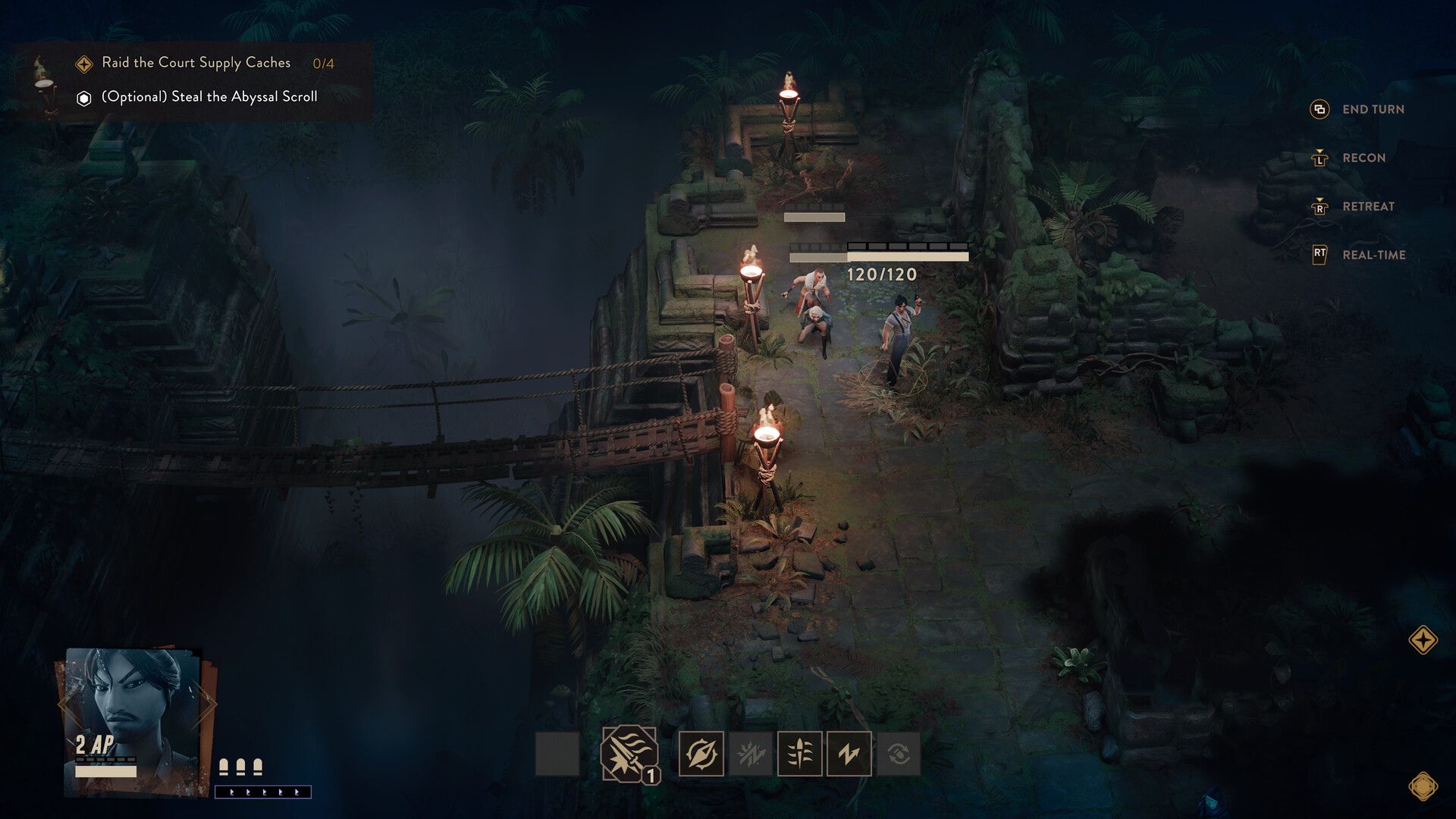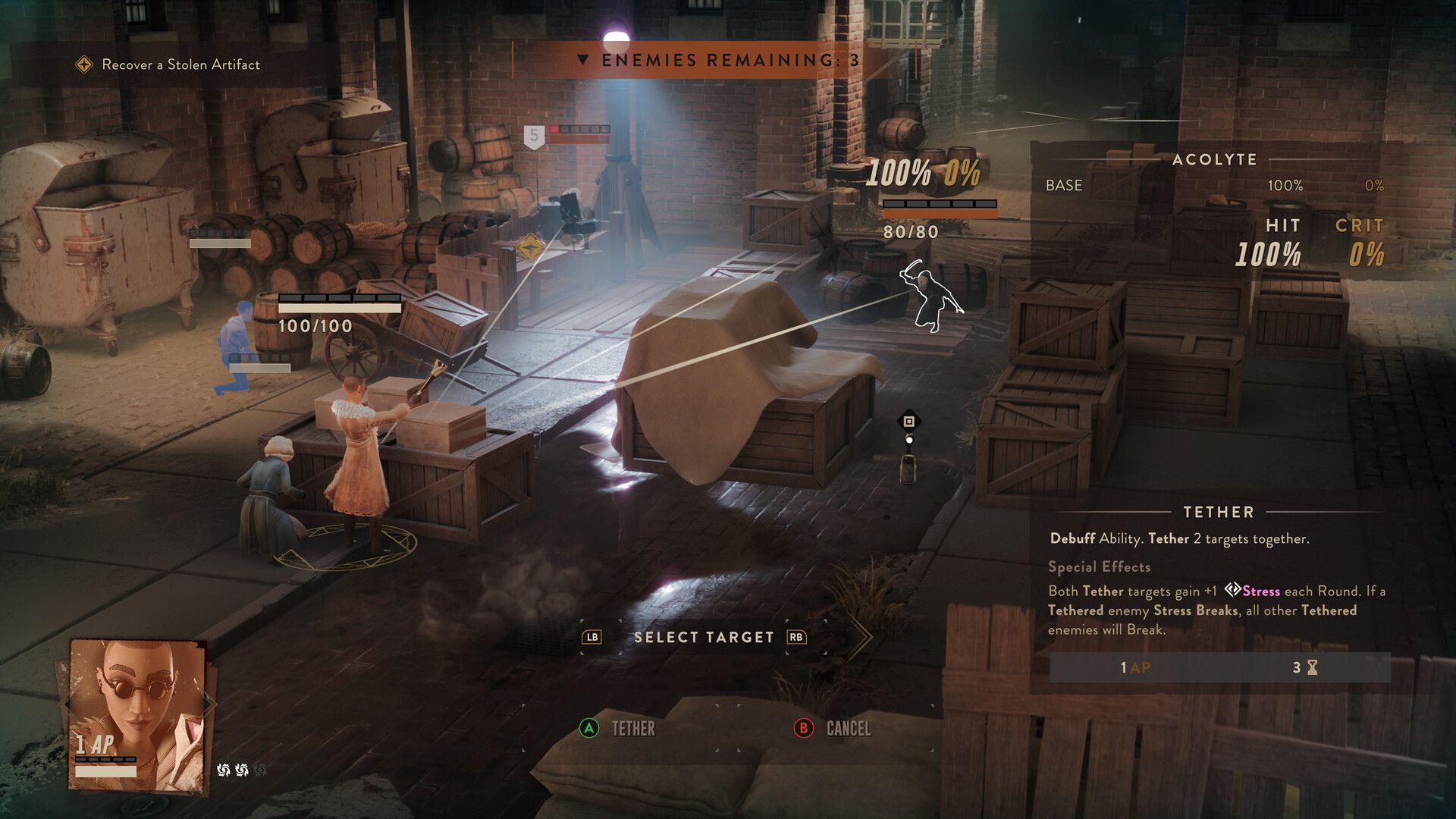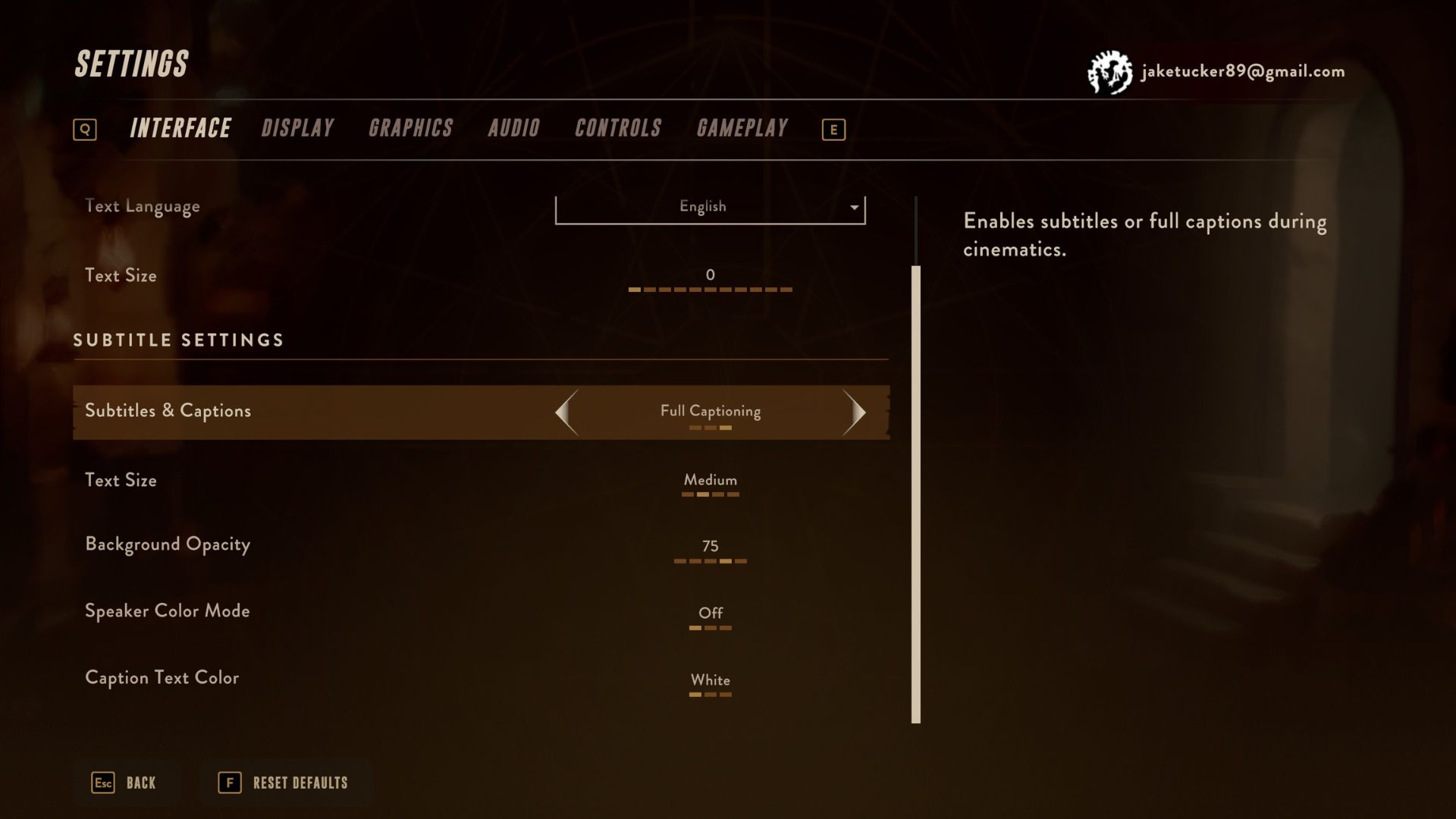Review info
Platform reviewed: PC
Available on: PC, Xbox Series X|S, Xbox One
Release date: October 3, 2023
After you’ve beat up enough jackbooted thugs in an alleyway, the brilliance of The Lamplighters League reveals itself. The turn-based strategy game comes from Harebrained Schemes, better known these days for their work on stompy mech-’em-up BattleTech, but the scuffles here couldn’t be further from BattleTech’s city-leveling conflicts.
Here the fighting jumps from the pages of pulp adventures, where your cast of daring scoundrels biff, pow, and blast baddies in a variety of locations: a winding alleyway, a hotel in the desert, or a snowy forest. While the stakes are the same – the end goal is to save the world from a horrible fate – the methods in which you try to seize victory often involve a poison dagger, a hand grenade, or even just a pair of revolvers.
The change is a good one. Bringing the camera in close lets us see the characters, and it’s these that make The Lamplighter League shine brighter than many other entries in the turn-based tactics genre. The writing is top-notch here, and characters will react to each other’s triumphs and mishaps with lines that hint at the growing relationships between the rogue’s gallery that join you on missions.
While the mechs that inhabit Harebrained Schemes’ BattleTech are sterile and unknowable, these heroes are the beating heart of The Lamplighter League.
Lamped ’em

Some smart design decisions mean you’ll often rotate the agents you take on missions, particularly because when a character is downed they’ll often need time to recover. However, you’ll mostly switch up your A-team operatives regularly because every character is brilliant, hewn roughly from archetypes you might see in any tale of derring-do. The Lamplighters League makes itself clear early when you start with the stealthy Lateef, punchy Ingrid, and pistol-toting Eddie, but I was most fond of Ana Sofia, who gets a ton of killer voice lines, is well-acted, and also has a submachine gun despite her official role of team healer.
In play, most of these characters will feel distinct. Ingrid is a close-range behemoth, with the ability to dance through a crowd of enemies, knocking one over as it hits the wall before pirouetting into the middle of a brawl to unleash her ultimate ability; a sweeping leg and a high roundhouse kick, damaging everything around her. Eddie can put out a nearly unlimited amount of damage with his revolvers, and every character has their own “engine”, a unique mechanic that lets them be good at the thing they’re supposed to be good at.
This is classic turn-based strategy, so there’s a grid and you’ll rattle around it burning AP (each character starts with two, but it’s a fluid resource, and many buffs or skills will give characters more) to move or perform actions. Once your heroes – there’s usually three but some missions can give you more – have acted, then the enemy will take their turn. So far, so turn-based. The addition of stealth makes things a little more interesting, but stealth here isn’t a viable option for the entire game but instead a chance, Indy-style, to bop a few guards before a big scrap.
Best bit:

The violent stealth kills available to all Bruiser characters has them charge into a crowd of enemies killing everyone they touch. As The Lamplighters League points out, it’s hard for anyone to raise the alarm when they’re all dead.
The meta-game and size of conflicts bring to mind a different turn-based tactics game. XCOM: Chimera Squad feels like a close fit style-wise, with small-scale movement-focused warfare as you seek to stop three powerful enemies working for ultimate baddies – The Banished Court – from gaining too much power. This is represented by little gauges and as they fill up this trio will gain extra abilities and be more of a pain in your behind. So, you juggle missions to try and keep them from gaining too much power, and then you take the fight to them with a mission that knocks them off the board entirely. If you’ve seen this before in XCOM 2’s stellar War of the Chosen expansion, no you didn’t.
Sadly, the push and pull of this in addition to the several different resources you need to keep on top of to upgrade your weapons or healing abilities while also recruiting new members to the League, means that the metagame is often the most stressful part of the experience. There are just a lot of urgent issues that need your time and attention and while this does create tension it often goes right past that, until it’s something akin to the game smacking you upside the head, demanding you to make an impossible choice.
This will keep you engaged – especially when these demands start forcing you to go toe to toe with the dangerous scions just so you can delay their plans a little, even at the cost of your own agents – but it’s at odds with the rest of the game which is mechanically lightweight.
Still, there’s a strong chance if you’re into strategy games you’ll find something to love with The Lamplighters League, even if, due to the lack of replayability, you’ll probably only enjoy it once.
Accessibility features

Subtitles and a few graphics options are your lot here. You can change the opacity of text boxes and change the size of text boxes if needed, but there’s very little else on offer. However, due to its turn-based nature, this may be enough accommodations for many.
How we reviewed The Lamplighters League
I played The Lamplighter League for 20 hours, which was enough to wrap up around two-thirds of the game’s story. I did this with a keyboard and mouse and think it would be better to do it that way.
I’ve played a lot of turn-based tactics games, and have reviewed the likes of XCOM 2, Jagged Alliance 3, Marvel’s Midnight Suns, and XCOM Chimera Squad. I beat XCOM 2 on Legendary without losing a single soldier, which doesn’t impact my review but isn’t something I can brag about usually so give me my moment, yeah?
Want something with more depth? There are plenty of options in our list of the best PC strategy games.



